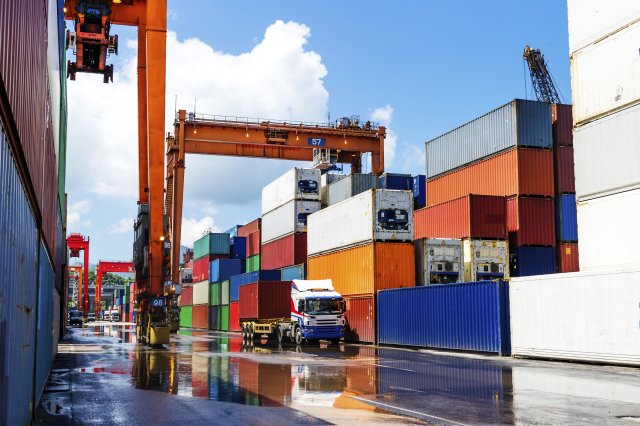Quantifying and Characterizing Near-Port Populations in the Conterminous United States
On this page:

Overview
Marine ports are critical for commerce and economic growth, and they play a significant role in the goods movement supply chain. However, port-related activity often contributes to air pollution emissions from a variety of diesel-powered mobile sources that operate in port areas such as trucks, locomotives, cargo handling equipment, harbor craft, and ocean-going vessels. These sources can have important impacts on local and distant air pollution. Communities near ports may be exposed to harmful local emissions related to port activity and may benefit from efforts to make ports cleaner. However, the number of people living near ports and the demographics of these populations remains poorly defined, in part due to the complex and numerous ways to describe a port and port operations.
In this report, the EPA identified populations near ports in a more sophisticated manner than traditional proximity analyses by leveraging a 2010 high-resolution population dataset of the conterminous United States (CONUS, the lower 48 states and the District of Columbia) and port geometries from two different Federal agencies. This report also characterizes the attributes of these near-port populations.
Report and Key Findings
- Quantifying and Characterizing Near-Port Populations in the Conterminous United States (pdf) (2.2 MB, December 2024, EPA-420-R-24-021)
- Key findings include:
- At least 31 million people live within 5,000 meters of major ports in the conterminous U.S.
- Near-port populations have higher shares of sociodemographically vulnerable groups than comparison groups, and these differences are not driven solely by the busiest ports.
- A key challenge of this work is the complexity of mapping and defining port operations geospatially.
Data Files
These data files are for reference only. If you have any questions about this report, please email harrison.sarah@epa.gov and kuiper.grace@epa.gov.
- Shapefiles:
- Shapefile Guide (pdf)
- ACE123-ICCBlockGroups (zip) (November 2024)
- ACE123-NearPortBlockGroups (zip) (November 2024)
- ACE123-Ports-2023-12-11 (zip) (November 2024)
- NEI123-ICCBlockGroups (zip) (November 2024)
- NEI123-NearPortBlockGroups (zip) (November 2024)
- NEI123-Ports-2023-12-11 (zip) (November 2024)
- Tabular Files:
- Tabular Data File Guide (pdf)
- ACE Tabular Data Files (zip) (November 2024)
- NEI Tabular Data Files (zip) (November 2024)
